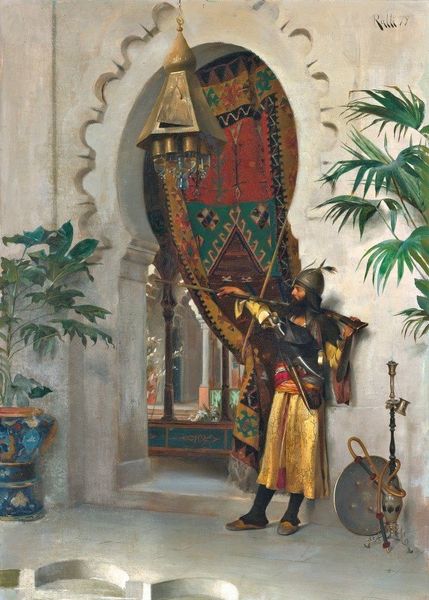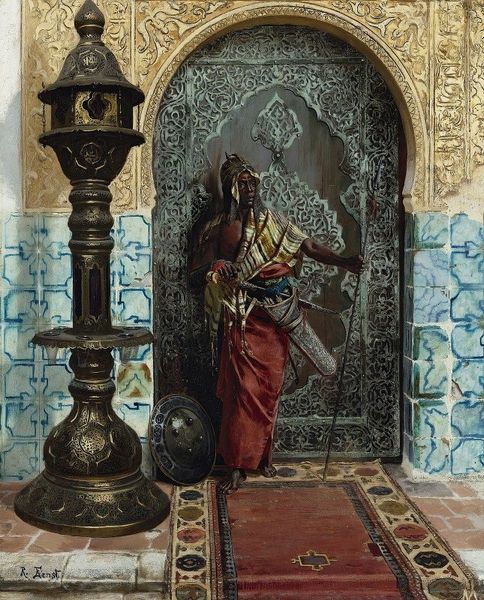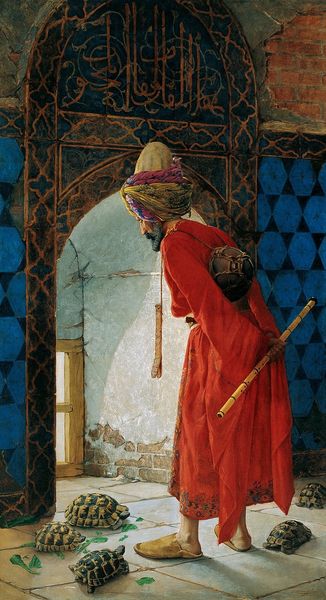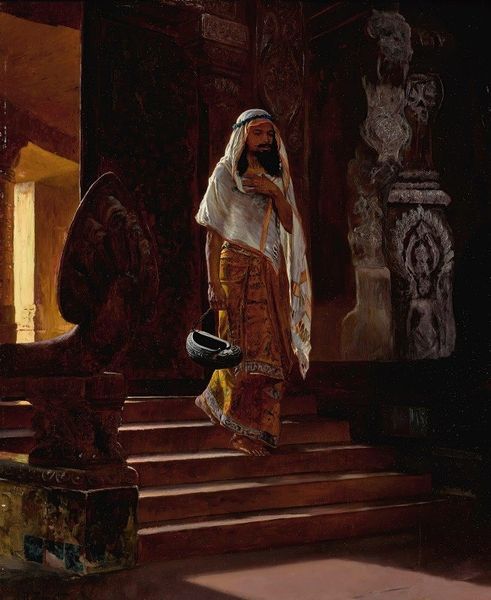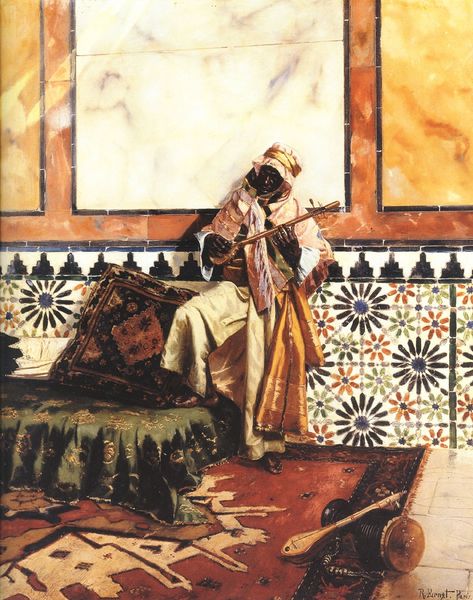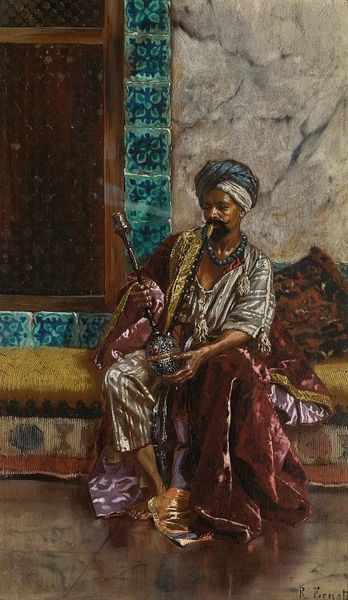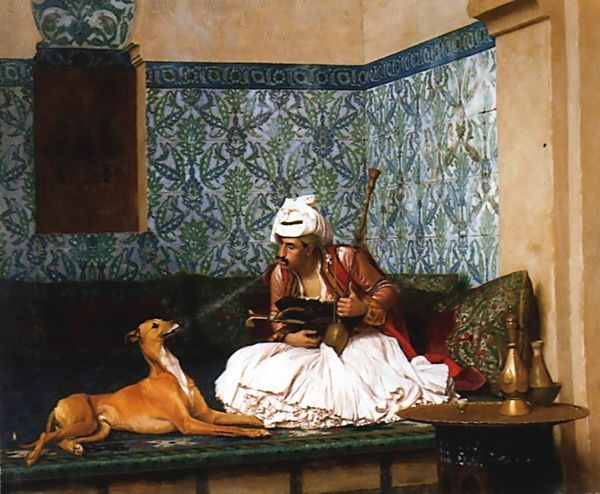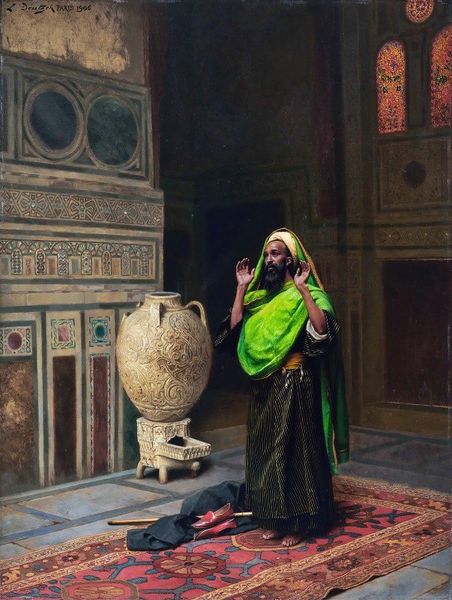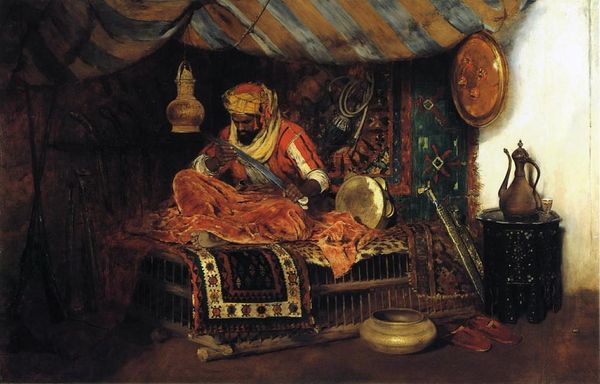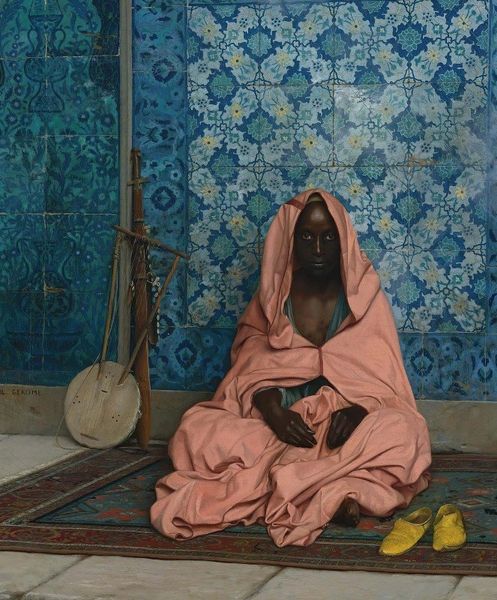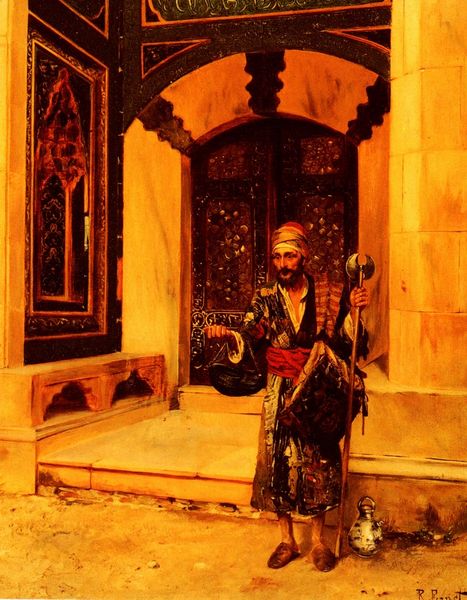
Copyright: Public Domain: Artvee
Curator: Let’s take a look at Jean-Léon Gérôme’s 1874 painting, "Markos Botsaris." It exemplifies Orientalism within Academic art, a popular genre painting during that period. Editor: My first impression? Resignation. The man is slumped in his chair, looking utterly defeated despite all the trappings of what I assume is power around him. The cool blue tiling creates a claustrophobic feel. Curator: Gérôme was celebrated for his ability to capture realistic detail. This work reflects an idealized version of the "Orient" – exotic, detailed, yet often inaccurate and perpetuating colonial narratives. Look at the rendering of textures, from the tilework to the opulent fabrics. Editor: That richness also strikes me as performative. We know Botsaris was a Souliote commander in the Greek War of Independence, a freedom fighter. But Gérôme, from his Western gaze, places him here, seemingly complicit within a scene of Eastern luxury, which is troubling, isn’t it? How does this serve French colonial desires and fantasies? Curator: That’s a valid interpretation. However, one could also read this image in terms of contemporary fascinations with ethnographic portraiture, showing, instead of judging. Gerome used historical figures as subjects of paintings to exemplify character or provide moral commentary. In doing so he created a political stage to critique and analyze, using portraiture conventions for persuasive ends. Editor: And who benefits from that moral commentary? Does it humanize or further "other" the figure? The very act of "displaying" Markos Botsaris like this serves a specific power dynamic. Curator: And what do we make of his pensiveness? Is it contemplation? Despair? Gérôme is leaving the viewer to project their own understanding of Botsaris' character, albeit through a lens constructed through artistic and political conventions of his time. It’s undeniable that interpretations evolve, shaped by changing societal values. Editor: Exactly! What’s rendered neutral and realistic in one era, can be revealed as loaded in another. So while there's great skill in execution here, it's crucial to analyze the deeper, sometimes insidious, messages embedded within this "genre painting." Curator: Looking closely, the interplay of visual information opens further possibilities and a deeper reading of the figure presented. It seems, the more one learns of the artwork’s role, the better one can read both context and contemporary perspectives to understand its relevance in art history. Editor: Yes, analyzing both the immediate artistic qualities and socio-historical contexts encourages continuous reflection. We are positioned to critically reflect not only what art *is* but *does*.
Comments
No comments
Be the first to comment and join the conversation on the ultimate creative platform.
